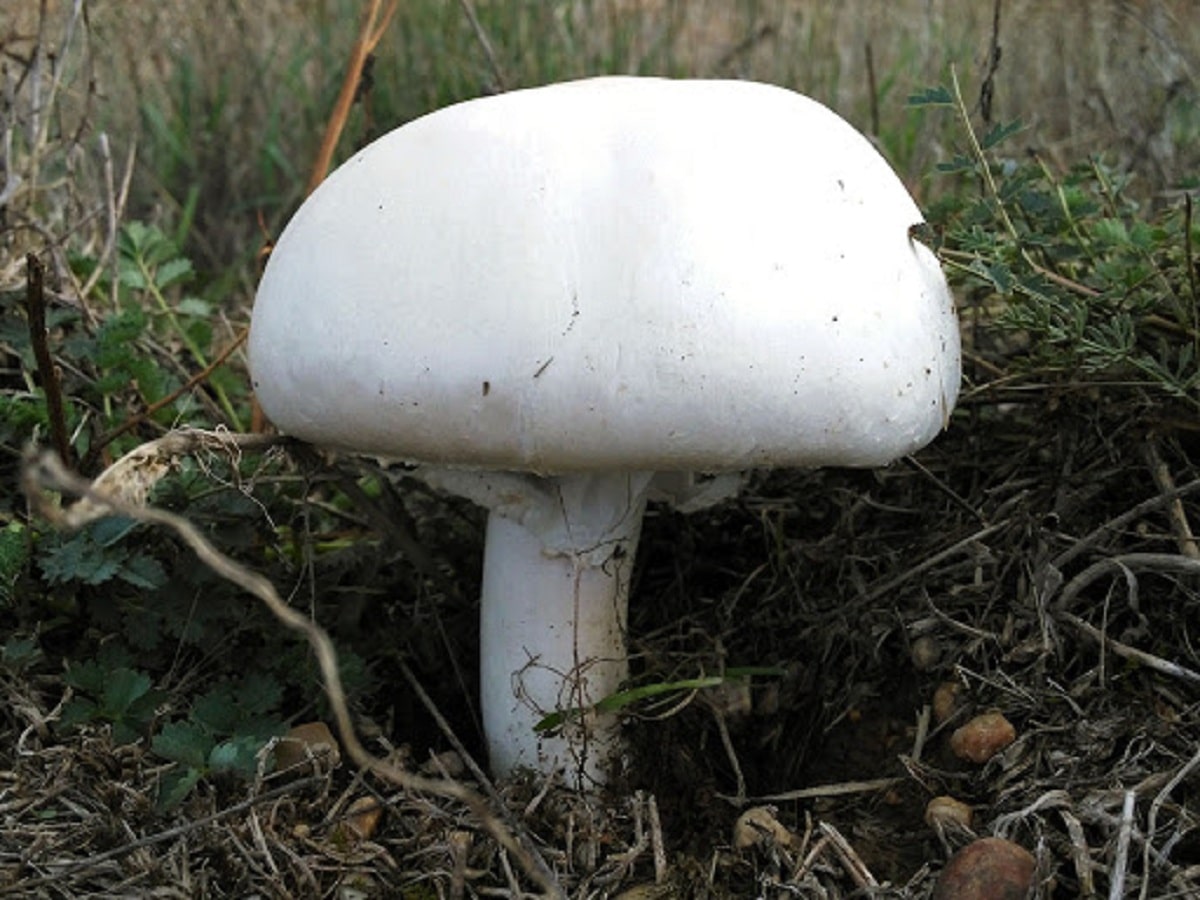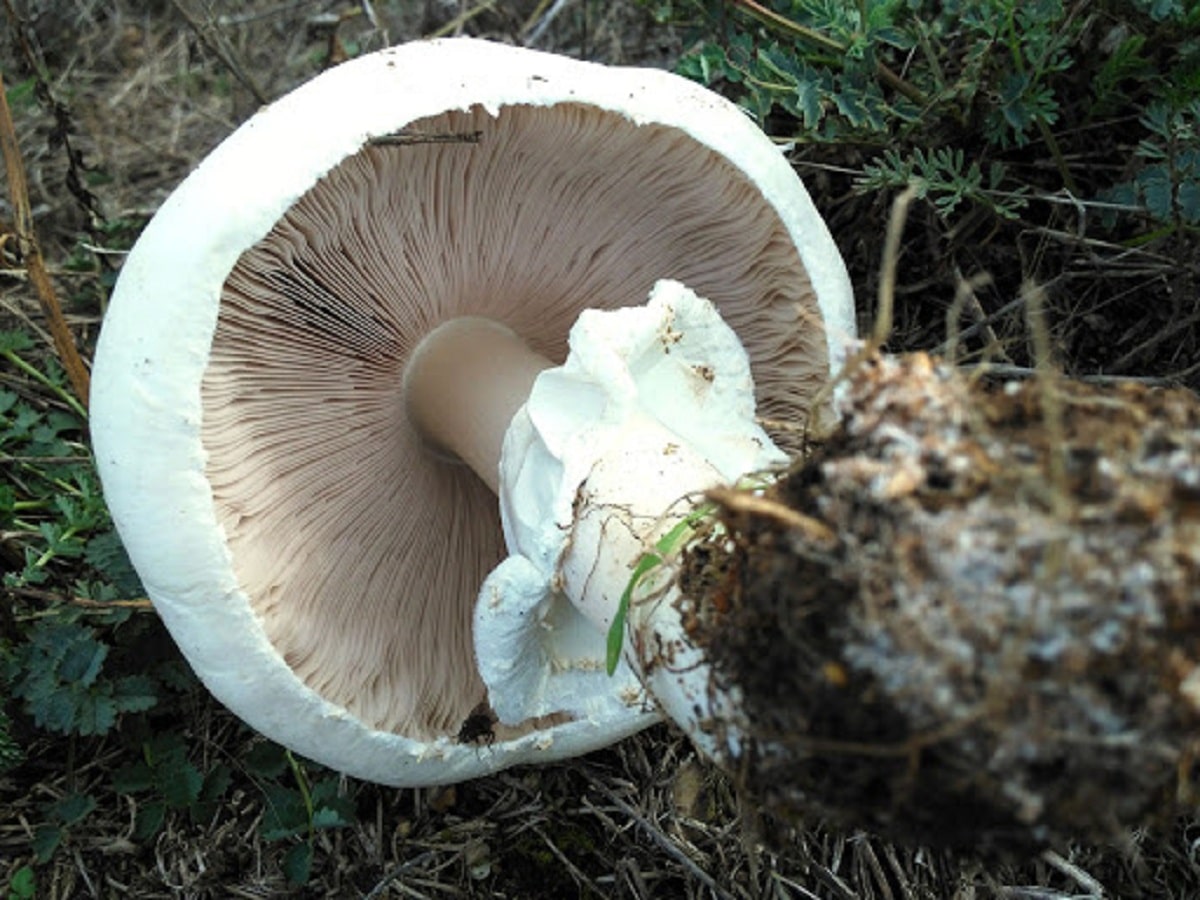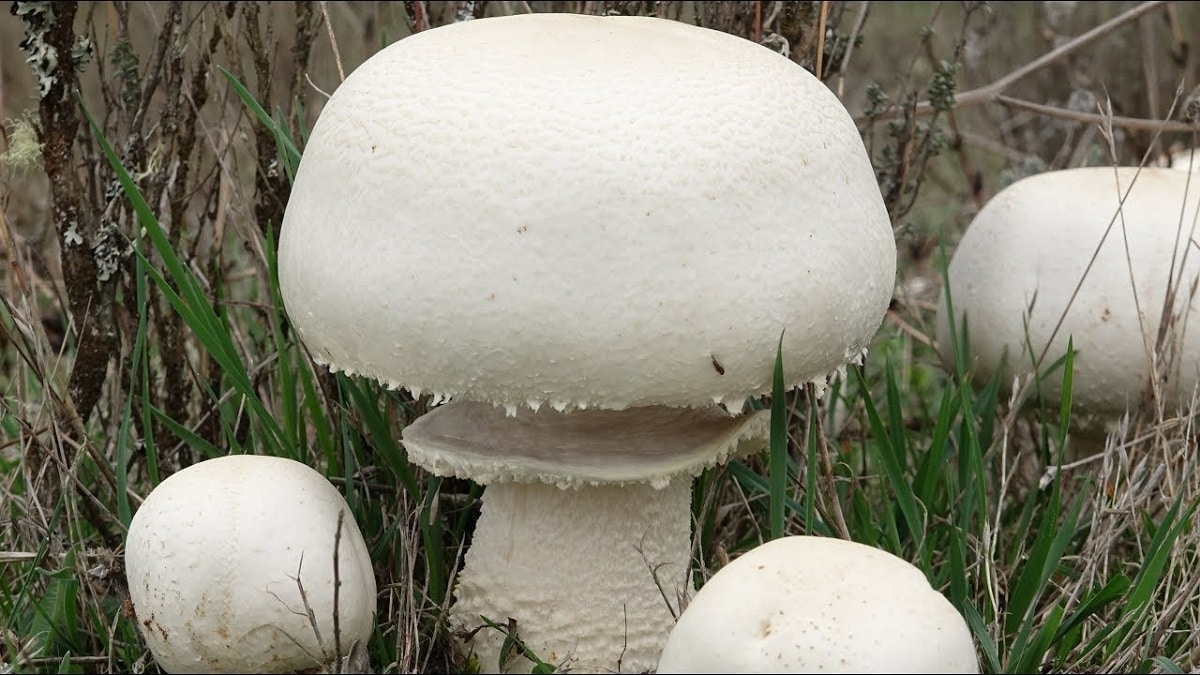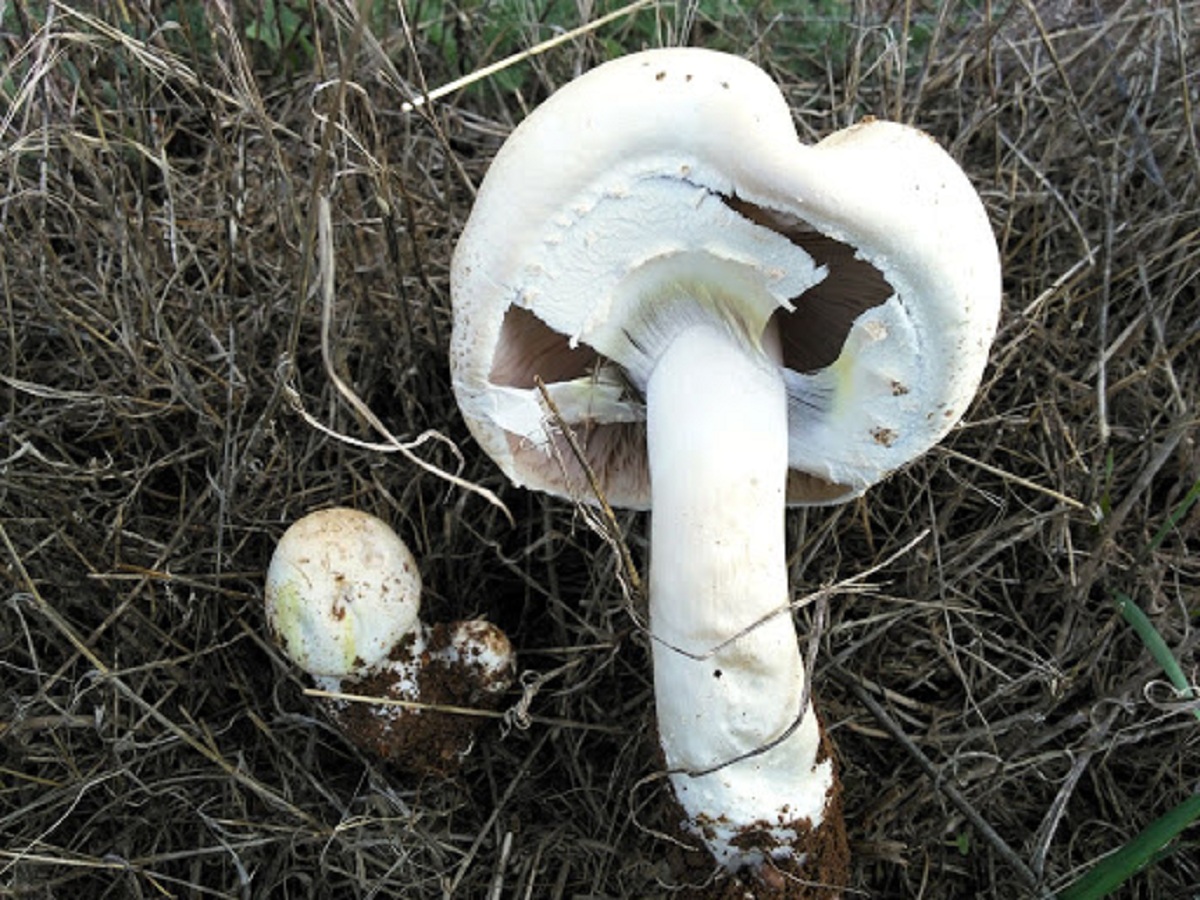
Today we are going to talk about a highly demanded edible mushroom that belongs to the Agaricaceae family and often has confusion with the species of the same group. Its about Agaricus arvensis. This mushroom is known by the common name of snowball for its tremendous resemblance. She also has a common man and he is larrisuso. It is a good edible and that is why it is collected every year.
In this article we are going to tell you all the characteristics, habitat and possible confusions of the Agaricus arvensis.
Key features

Hat and foils
It is a kind of mushroom whose hat can have a very variable size. It is called a snowball since it resembles its size and appearance to a snowball. The hat can reach sizes of about 30 centimeters in diameter, although the normal thing is that they do not exceed 20 cm. When the specimen is young it has a globose appearance and, as it develops, it acquires a convex shape. In the adult stage when they are fully developed we have that the hat adopts an almost completely flat shape.
Its cuticle is white and has slight yellowish tones. If we touch the hat we can see that in those areas in particular they turn a more striking yellowish color. The cuticle of the hat is usually smooth, although sometimes we find it slightly fibrous, thick and easily separable. Depending on the climate where you are, we can see that the differences and changes in temperature and constant humidity can reduce cracks in the hat. And it is that with the excess of humidity to these mushrooms it acquires greater volume and as it loses that humidity it loses size.
It has free but tight blades between them. The sheets can be recognized with the naked eye as they are whitish in color, but never completely white. They also have pink tones that darken to be dark brown, almost black. This occurs as they develop and become adult.
Pie and meat
As for the foot, it has a cylindrical shape and is quite consistent. It can be easily separated from the hat and becomes thicker as we go to the base. The foot is white and tends to yellow on the underside. It is also yellow to the touch and has a double ring. The upper ring has a white color, smooth membranous shape and the lower ring is like a cogwheel. This inner ring is one size larger and is obvious to the naked eye. The foot becomes a hollow with advancing age.
Lastly, the meat is quite compact and white in color. The white color of the meat is purer and more intense between the slices. For this reason, the foot must be differentiated in the color of the meat and the plates to properly identify this species. When the specimens are more adult and, even old, the color of the meat changes to more yellow and, finally, ocher.
One of the characteristics that can help us differentiate the Agaricus arvensis it is the smell that it releases when it is collected. And is that this smell is characteristic of anise. It is a more noticeable odor at the base of the foot and disappears with time. It is a good edible and a flavor that reminds us of walnuts.
Habitat of the Agaricus arvensis

It is a species that grows in spring as well as in autumn needs meadows, grasslands, parks, roadsides, etc. They need abundant winter rainfall so that it can develop in the prairies. Since its habitat is quite varied in a very abundant mushroom. They are usually found in groups forming groups of witches. It is rare to find solitary specimens, although they can be found.
Its edibility is quite good, although many staff do not like its flavor very much. As with all the fungi of the Agaricus group, this species is more edible and of better quality when they are young specimens. When we see that adults have darker blades they are slightly problematic when it comes to eating. It must be taken into account that, in order to prepare and eat the most adult Agaricus, the darkest parts of their sheets must be removed. Otherwise, they could cause some digestive problems, etc.
Main confusions of the Agaricus arvensis

As we mentioned at the beginning, this type of mushroom has some very similar ones from the same group. This can make us make mistakes when collecting. There are also some confusions a group of the amanitas. For example, it can be confused with the white amanitas that share the same habitat. Some of them are: fly agaric, fly agaric y Amanita phalloides. The importance of being able to differentiate Agaricus arvensis of these amanitas this are very toxic. They are frequently deadly species of mushrooms but there are some variances in their appearance.
All the aforementioned amanitas have the volva and the blades completely white. They are characteristics that they can differ from all Agaricus since they do not have volva. In addition, its plates never become completely white, but whitish that you have and they turn yellow as they develop. In some specimens of Agaricus we can see that the blades are pale pink in color and can be clearly differentiated by marking. This can be a clear indicator to know what is the Agaricus arvensis.
Another species with which it can be confused and that this subgroup is the Agaricus xanthodermus. This fungus is quite common and slightly toxic.. There is more confusion within the Agaricus group but there is not much problem that many of them are good edibles. However the Agaricus xanthodermus it is more toxic. It differs mainly by the fungus. The latter has a color similar to iodine or phenol. Also, the taste is very unpleasant. In young specimens we can see that they are clearly trapezoidal and their feet are longer.
I hope that with this information you can learn more about the Agaricus arvensis.